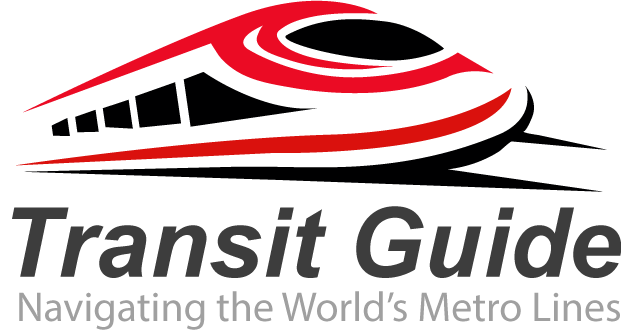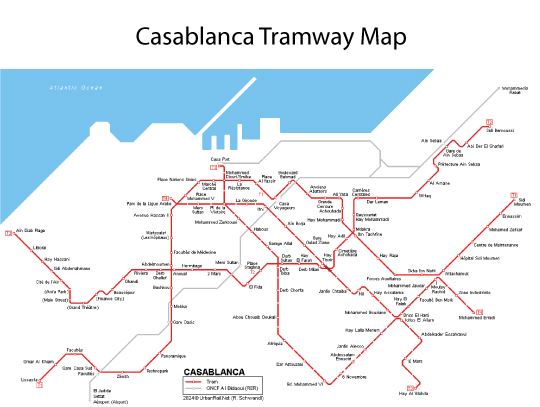Casablanca, Morocco’s economic capital with nearly 4 million residents in its metropolitan area, operates an extensive tramway system rather than a traditional underground metro. While plans for a metro system were initially considered, the city council decided in 2014 to focus on expanding its successful tramway network instead, proving to be a cost-effective and efficient solution for urban mobility.
The Casablanca Tramway Network
Current Operating Lines
The Casablanca Tramway currently operates four main lines serving the city’s 3.2 million inhabitants:
Line T1 (2012): The flagship line features a distinctive Y-shaped layout stretching 23.5 kilometers with 37 stations. It connects the southwestern and eastern suburbs to the city center, running from Sidi Moumen to Lissasfa terminals. This line serves key destinations including the university campus, wholesale market, Ouled Ziane bus station, and the business district.
Line T2 (2019): Completed as part of Phase 2 expansion, this line enhances connectivity across different neighborhoods and integrates seamlessly with Line T1.
Lines T3 and T4 (2024): The newest additions to the network, these lines began passenger service in September 2024 after extensive testing. They represent a significant expansion of the tramway system’s reach and capacity.
Technical Specifications and Fleet
The tramway system utilizes modern Alstom Citadis X05 low-floor trams, with the fleet expanded to 204 vehicles as of 2024. These trams operate in coupled pairs, capable of carrying up to 630 passengers per train set. The system is designed for accessibility and comfort, featuring air conditioning and step-free access.
Ticketing and Pricing
The Casablanca Tramway offers affordable, government-subsidized fares:
- Single journey: 8 Moroccan Dirhams (approximately $0.80 USD)
- Two-trip ticket: 14 Moroccan Dirhams
- Weekly season passes available
- Flat rate pricing regardless of distance traveled
Service Information
Operating Hours: The tramway typically operates from early morning to late evening, with specific schedules varying by line.
Frequency: Average headways are 11 minutes, with plans to reduce intervals as ridership grows. The network expects to handle over 20 million journeys annually by 2025.
Stations: The complete network features dozens of strategically located stations connecting residential areas, business districts, educational institutions, and transport hubs.
Benefits for Travelers and Residents
The Casablanca Tramway system offers numerous advantages:
- Cost-effective transportation with subsidized fares
- Environmental benefits reducing urban traffic congestion
- Accessibility features for disabled passengers
- Integration with other public transport modes
- Modern comfort with air-conditioned vehicles
- Reliability with dedicated tracks avoiding traffic interference
Future Development
The tramway system continues to evolve, with ongoing investments in infrastructure and rolling stock. The successful implementation of Lines T3 and T4 demonstrates Casablanca’s commitment to sustainable urban transport solutions. Additional expansions and route optimizations are being considered to serve the growing metropolitan area.
Navigation and Usage Tips
For visitors and new users:
- Purchase tickets at station machines or authorized vendors
- Validate tickets before boarding
- Check real-time arrival information at stations
- Plan connections between lines using official network maps
- Consider weekly passes for extended stays
The Casablanca Tramway represents Morocco’s largest urban rail project and serves as a model for other Moroccan cities developing modern public transportation systems. Its success demonstrates how tramway networks can effectively serve major metropolitan areas while providing sustainable, accessible urban mobility.

